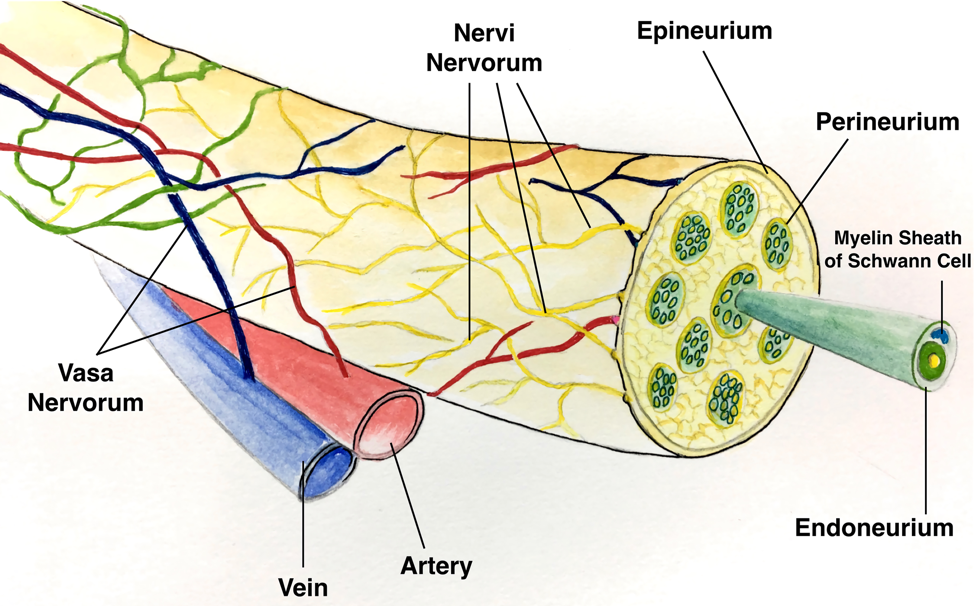Nerve Hydrodissection
What is Nerve Hydrodissection?
Nerve Hydrodissection is an injection technique used to treat nerve entrapments. It involves injecting a solution to mechanically separate the nerve from surrounding structures, including tissue and fascia. The entrapped nerve is identified by history, exam, and ultrasound visualization. The treatment procedure is performed with ultrasound visualization to simultaneously view the entrapped nerve, needle, and surrounding structures.
Is my doctor qualified to perform this procedure?
It is important to have proficient training and experience when injecting around nerves. Dr. Nourani has taken multiple courses, including injection of cadavers, and treating many patients.
How does it work?
The jet force of the fluid directed from the needle causes the separation between the nerve and surrounding structures.
Does it hurt?
You may experience aching burning, pressure, cramping that should cease after injection is complete. The large majority of people tolerate the procedure very well with minimal discomfort.
What is the goal of Nerve Hydrodissection?
Restore normal movement of the nerve and surrounding structures. By releasing abnormal adhesions of the nerve from surrounding structures, ideal biomechanical motion returns. [see Stanley Lam reference for cartoon illustration of nerve]
What solution is injected?
The solution is determined on a case-by-case basis depending on location, goals, chronicity, ultrasound imaging findings, and pain. Solutions may include any combination of the following:
- D5W: Nerve calming effect without numbing anesthetic sensation. This is relatively simple and safe without concerns of toxicity. Provides diagnostic and therapeutic benefit. May additionally support lymphatic drainage.
- Normal saline: Simple and safe. Helps dilute the other solutions.
- Local Anesthetic (lidocaine): Nerve numbing benefit. Too much may not be healthy.
- Platelet Rich Plasma (PRP): There is some evidence suggesting the combination of PRP and nerve gliding exercises for the benefit of carpal tunnel syndrome.
- Steroids: Reduces inflammation. Too much may cause cellular death and alteration of collagen synthesis. This may lead to tendon weakness and rupture.
Common Areas Treated


Is there any literature supporting Nerve Hydrodissection:
The following nerve hydrodissection treatments are supported in the scientific literature:
- Radial (wrist)
- Baxter’s (foot and plantar fascia)
- Ulnar (elbow)
- Peroneal (leg, knee, ankle, foot)
- Median (wrist, carpal tunnel)
- Lateral cutaneous nerve of the thigh (thigh and leg)
- C6 nerve root (neck)
- Caudal epidural (back)
- Infrapatellar saphenous neuralgia after toral knee arthroplasty (knee)
- Greater occipital nerve (head)
- Superior cluneal nerve (back pain)
Ultrasound-Guided Nerve Hydrodissection for Pain Management: Rationale, Methods, Current Literature, and Theoretical Mechanisms
Stanley Lam.
Infrapatellar Saphenous Neuralgia After TKA Can Be Improved With Ultrasound-guided Local Treatments
Steven Clendenen, MD, Roy Greengrass, MD, Joseph Whalen, MD, PhD, Mary I. O'Connor, MD
Marrying Tendon and Nerve Gliding Exercises with Hydrodissection Following Injection for Carpal Tunnel Syndrome – A New Treatment Approach?
Nathan J Savage, Joseph Albano
Therapeutic Injection of Dextrose: Prolotherapy, Perineural Injection Therapy and Hydrodissection
Dean Reeves, MD, David Rabago, MD



